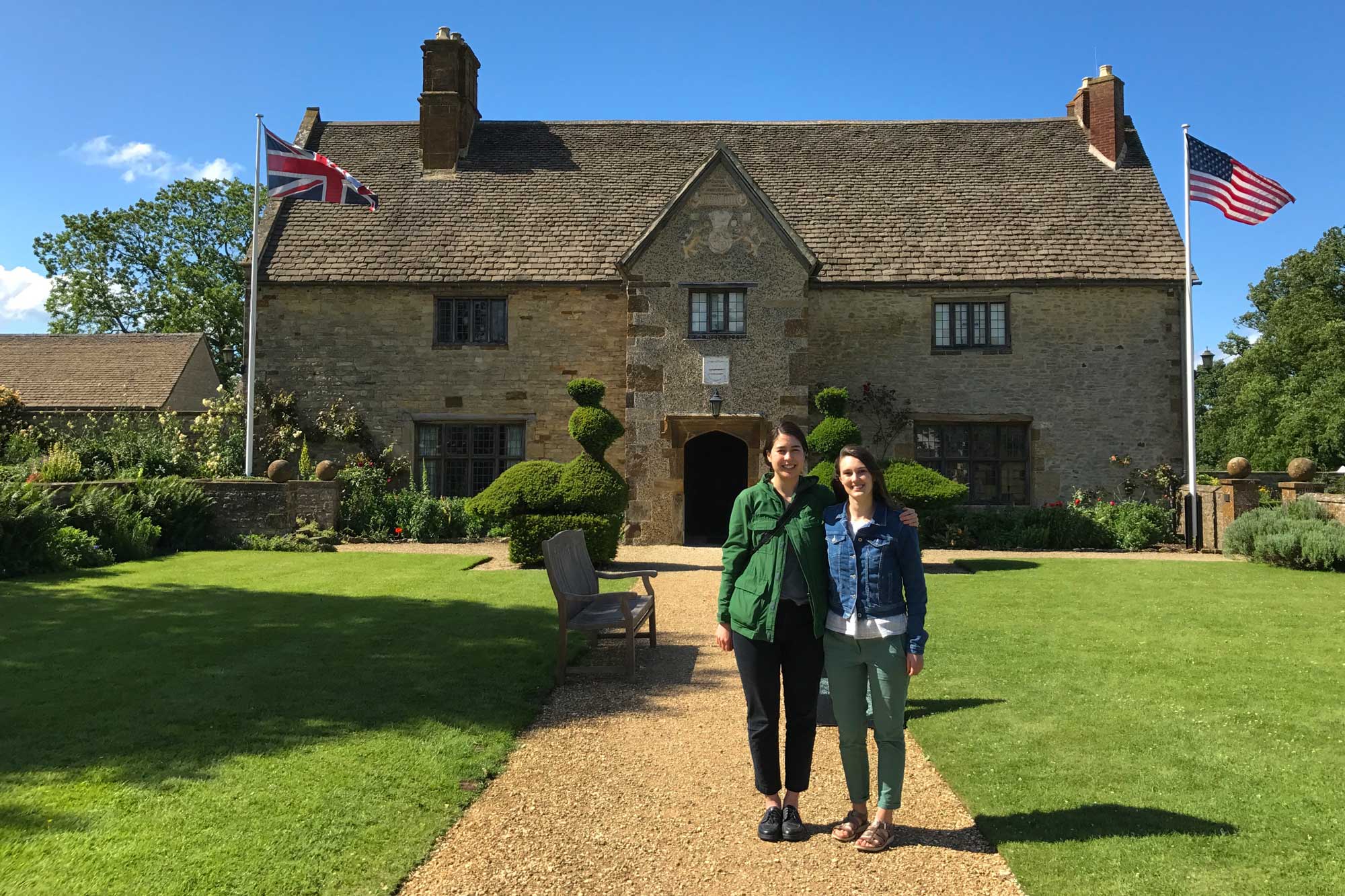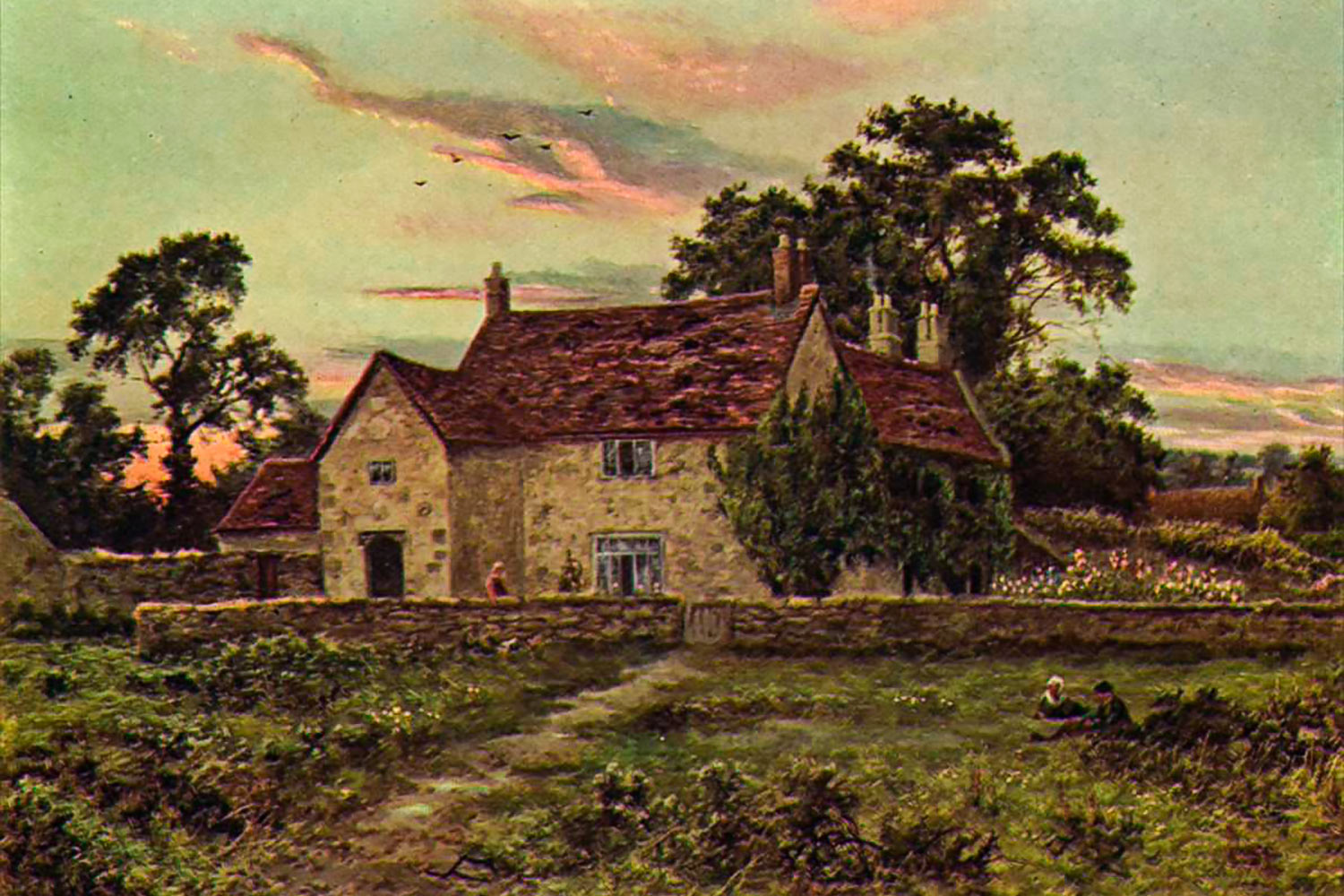Two University of Virginia students are spending their summer uncovering the architectural history of George Washington’s ancestral home in Sulgrave, England.
With support from UVA’s Global Internship program and the School of Architecture's Program in Historic Preservation, Jane Trask and Aisha Sawatsky, both graduate students in UVA’s School of Architecture, are finishing an internship at Sulgrave Manor, a stately but relatively modest home northwest of London where the first president’s ancestors resided for about 100 years.
The manor house was built by Lawrence Washington, George Washington’s five-times great-grandfather, who acquired the land after King Henry VIII dissolved England’s monasteries in 1539. Lawrence Washington – a prosperous wool merchant and twice mayor of nearby Northampton – his wife, and their 11 children lived there until his death, when the manor passed to his son, Robert. His descendants sold the manor in the mid-1600s, around the same time that George Washington’s great-grandfather, John, sailed for America.
After the Washingtons sold the manor, it endured through many owners and tenants, various states of disrepair and multiple renovations. Ultimately, a committee purchased it in 1914 to celebrate 100 years of Anglo-American peace following the Treaty of Ghent. Both Britons and Americans rediscovered its connection to George Washington and realized the value of preserving the president’s ancestral home.
Today, both British and American flags fly over Sulgrave Manor, which bustles with both British and foreign visitors, especially Americans. The manor’s grounds, gardens and exhibitions offer insight into the Washington family and its most famous member.

Aisha Sawatsky, left, and Jane Trask in front of Sulgrave Manor. (Photo courtesy of Aisha Sawatsky and Jane Trask)
Trask and Sawatsky are researching the evolution of the house from the 16th to the 21st century, led by fellow alumna Alexandra Valmarana, a 1996 architecture graduate who is a historic building conservator advising Sulgrave Manor. Another UVA alumna, Holly Smith, is on the manor’s Board of Trustees.
“The Sulgrave Manor Trust is particularly curious about what the house looked like in Tudor times,” said Sawatsky, who is pursuing a master’s of architecture with an additional certificate in historic preservation.
During their five-week stint at the manor, Sawatsky and Trask worked on a historic building assessment, using photographs and written records from the manor’s archives and their own observation of its architecture to understand the different phases of construction at Sulgrave.
“We measured and photographed the house and grounds and compared our findings with our archival research. We also visited other Tudor buildings in the region to get a sense of what Sulgrave may have looked like while the Washingtons lived there,” said Trask, who is working toward a master’s in architectural history with a certificate in historic preservation. “This has been a great opportunity to learn about many periods of architecture and construction.”
The pair presented their work at the manor’s Traditional Midsummer Tudor Fair, which included open-air performances, jousts, reenactments, archery competitions and more. Trask and Sawatsky will then turn the research over to the trust that operates the manor.
“We hope that our research will help people better understand Sulgrave Manor and its importance in American and British history,” Sawatsky said.

As for their own education, both Sawatsky and Trask said their experience at Sulgrave Manor – which fulfilled a requirement that graduate students in the historic preservation program complete an internship – was a great opportunity to practice what they have been learning in their classes.
“This practical application has been very valuable for me,” said Trask, who hopes to continue working in architectural history and historic preservation after she graduates next year.
Sawatsky agreed, and pointed out that working on historic homes like Sulgrave will be helpful even as she works on more modern buildings.
“Most of my work experience has been renovation and addition projects, so understanding historical construction techniques is important for me to design sensitively for what exists,” she said. “That was a big reason I was attracted to UVA’s program – because of the excellent historic preservation program and the wealth of resources of the historic campus itself.”
Media Contact
Article Information
June 13, 2017
/content/washingtons-george-uva-students-probe-familys-ancestral-home

